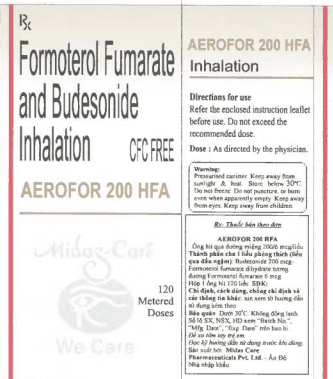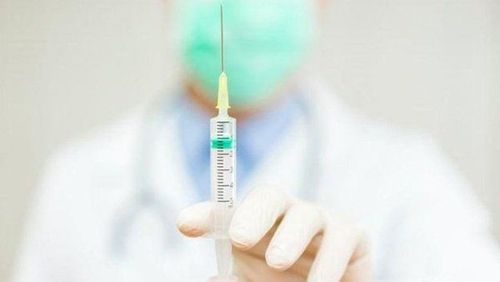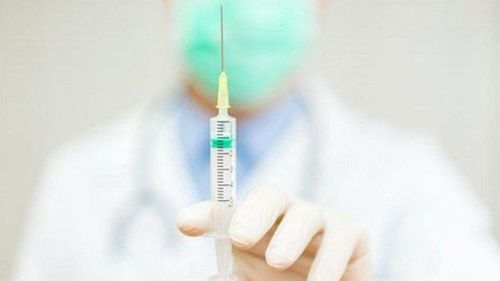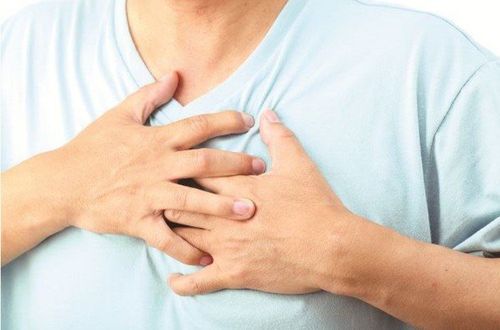This is an automatically translated article.
Computed tomography of the chest is an imaging method that uses X-rays to create cross-sectional images of the chest and upper abdomen. Thereby, computed tomography will allow the doctor to see the internal organs of the body with clearer details when compared to a regular X-ray film.1. What is a chest computed tomography scan?
Computed tomography of the chest is a type of imaging test that uses X-ray energy and a computer to create detailed pictures of organs and structures inside the chest. These images are more detailed and clear than conventional X-ray films. As a result, thoracic computed tomography can provide more information about trauma or diseases of the chest.
The general principle of thoracic computed tomography is to use an x-ray beam that moves in a circle around the body. Opposite the beam source is the image receiver. From there, multiple images, called slices, of the lungs and the inside of the ribcage will be collected and computerized. The computer processes these images and displays it on the screen.
During the thoracic computed tomography examination, when it is necessary to investigate the vascular pathology, the patient can be injected with contrast dye to clearly distinguish the tissues. This will help the body parts show better in the image, abnormalities are easily recognized.
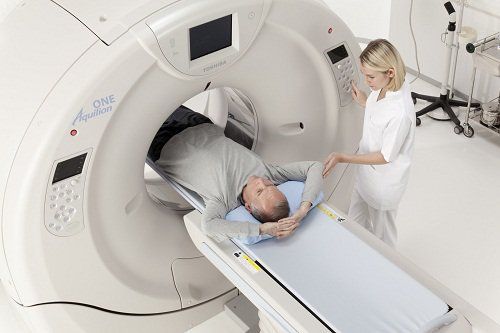
Chụp cắt lớp vi tính lồng ngực là một loại xét nghiệm hình ảnh học
2. What are the indications for thoracic computed tomography?
A CT scan of the chest can be done to examine the chest wall and its internal organs, in an anatomical range that ranges from the base of the neck to the upper abdomen, bounded by the diaphragm, when the doctor Clinical suspicion of one of the following abnormalities:
Airway obstruction Chest wall injury Thoracic trauma Chest bleeding Intrathoracic infection Infection Unknown tumor suspicious on plain X-ray Chest pain Unknown cause In addition, thoracic computed tomography may also be used to guide the needle during biopsies of organs or tumors in the chest; At the same time, this is also a very useful tool in monitoring the progress and response to treatment of malignancies in this area.
3. Are there any risks with computed tomography of the chest?
Before performing a CT scan of the chest, especially when it is necessary to use contrast agents, patients and relatives are consulted by the doctor, clearly explaining the benefits and possible risks associated with regarding this technique.
Better yet, the patient herself needs to know about the amount of radiation that will be used during the scan and talk to her doctor about the risks involved in her own particular situation. The patient should then document a history of past radiation exposure so that further exposure in the future can be limited.
If you are pregnant or think you might be pregnant, talk to your doctor about this. Because radiation exposure during pregnancy can lead to an increased risk of birth defects for the fetus. Likewise, if you are breast-feeding, you should also ask your doctor if breast milk can be used by breastfeeding after a chest CT scan, with or without contrast.
In the case of suspected diseases with indications for investigation with contrast dye, the patient will be at risk of being allergic to this drug. Therefore, it is important to inform your doctor in advance if you have ever had a reaction to any contrast agent. Also, a history of any kidney problems should be noted because in some cases the contrast medium can cause transient acute renal failure or irreversible chronic renal failure, which is sometimes necessary. hemodialysis intervention.
If the patient is taking a diabetes drug called metformin along with contrast material for chest computed tomography, the risk of metabolic acidosis is greatly increased. This is a condition in which there is a dangerous change in the pH of the blood. People with kidney disease are even more susceptible to kidney damage after exposure to contrast material and metformin.
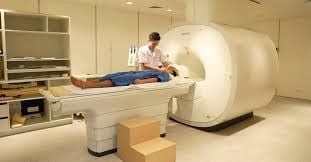
Trước khi chụp, bệnh nhân cần được bác sĩ tư vấn, giải thích rõ lợi ích và các nguy cơ có thể xảy ra
4. Steps to prepare before thoracic computed tomography
Unlike a regular chest X-ray, a chest computed tomography scan usually requires an appointment. At the same time, the patient also needs to be prepared with the following details:
Clothing : The patient may be asked to change into a specialized gown to lie on the thoracic computed tomography table completely. comfortable, allowing the best image quality to be obtained. Details on clothing or bodywork may interfere with the image. Therefore, not only changing the gown, the patient should also remove all jewelry and items such as watches, glasses... Use of contrast agent: If indicated, need to take computed tomography of the chest with Contrast drug, patients are indicated to stop taking drugs that can affect kidney function, including metformin. At the same time, patients will also be encouraged to drink plenty of water before and after the scan to increase the likelihood of drug elimination. In cases where the patient is unable to drink or has limited intake, an intravenous line will be substituted. Ask about allergies: It is important to tell your doctor about your allergy history if you have had an allergic reaction to any contrast material. Indeed, intravenous contrast should not be used if the patient has had a severe reaction or anaphylaxis to any contrast medium in the past. However, in cases if the patient has had mild to moderate reactions in the past and medical imaging is necessary, the patient may need to take allergy prophylactic medication prior to the scan as well as fully. rescue vehicles. Eating and drinking: For the indications for CT scan of the chest without contrast, the patient can still eat, drink and take medicine as usual. Conversely, if your doctor orders a contrast-enhanced computed tomography scan, you should not eat anything for at least three hours before the scan. However, the use of prescription drugs for chronic conditions, other than hypoglycemic drugs, is maintained with a little white water. In addition, based on the individual's medical condition, the doctor may require other specific preparations.
5. General principles of computed tomography of the chest like?
The radiologist or radiologist will explain the general principles of thoracic computed tomography to the patient to understand and cooperate before officially starting.
The patient will then be instructed to change into a gown and lie on the imaging table. It should be noted that you must lie still on the table during the shooting process to obtain sharp, blur-free images. Sometimes the technician will ask the patient to raise the arm above the head to make the chest area more visible. At the same time, the patient will also be asked to hold their breath for 10 to 12 seconds on command. While holding the breath, the table will move the area to be examined as the ribcage passes through the X-ray loop.
A non-contrast film is recorded first. Contrast is then injected into the prepared intravenous line and the procedure is repeated. Many people experience a "hot flush" when the contrast is injected but this is normal and will pass quickly.
For thoracic computed tomography (CT) scans for young children or those who are easily anxious or agitated, this can be difficult and the doctor may prescribe mild sedation, which is short acting and has no side effects. significant effect after the film shooting is over. However, if the patient is an adult, the patient will be advised not to drive or operate machinery afterwards.
After the scan, the patient can change back and go home, living as usual. Particularly for patients receiving contrast, it is necessary to stay under observation for a short period of time to see if there are any side effects or reactions to the contrast. Suspected symptoms are itching, swelling, rash, or difficulty breathing.
In summary, thoracic computed tomography is an imaging modality with higher sensitivity and specificity than conventional radiographs in the investigation of thoracic pathologies. However, thoracoscopy with this tool also carries the risk of radiation exposure or an allergic reaction to contrast if used. Therefore, a doctor's prescription for computed tomography of the chest in each case, in each individual is necessary.
At Vinmec International General Hospital, the thoracic computed tomography scan is performed by a team of highly qualified and experienced doctors in the field of diagnostic imaging, along with equipment , modern machines for accurate and fast results.
Please dial HOTLINE for more information or register for an appointment HERE. Download MyVinmec app to make appointments faster and to manage your bookings easily.
The article references the source: hopkinsmedicine.org, mountsinai.org




